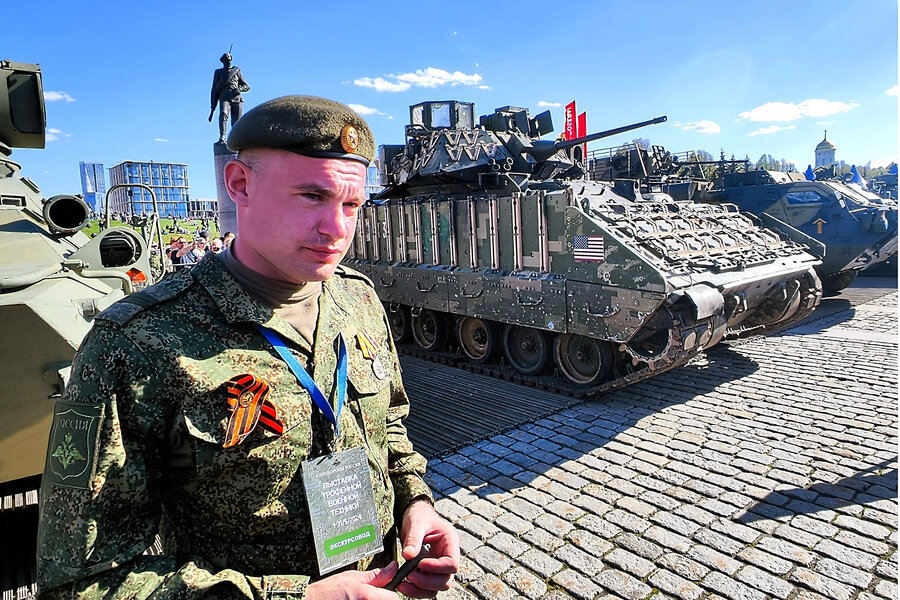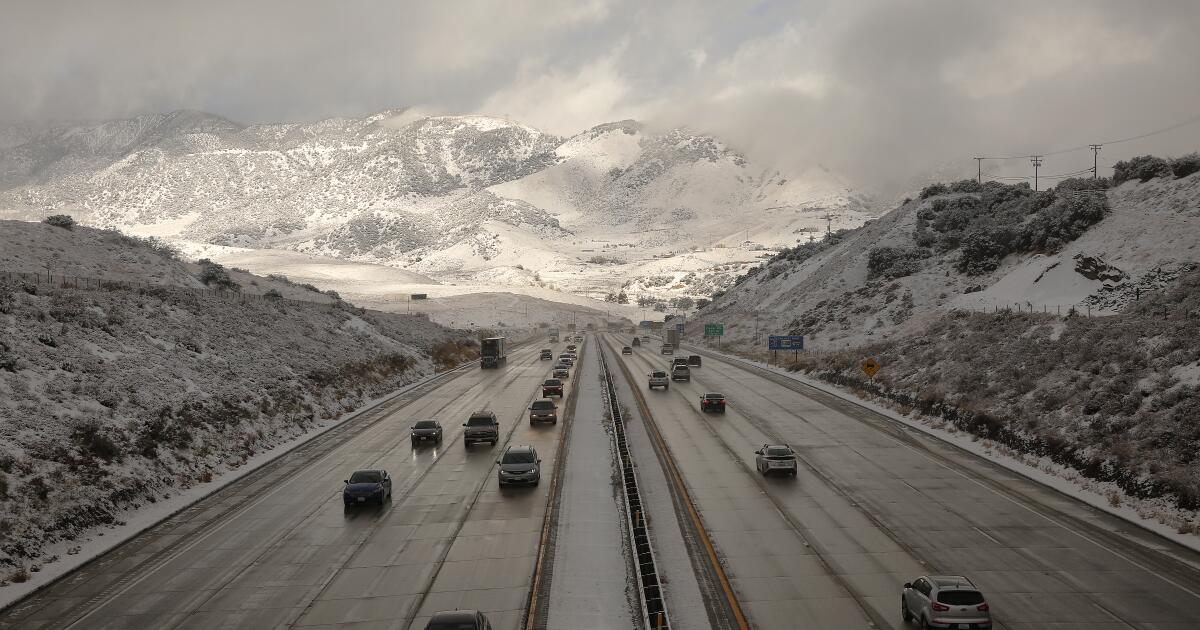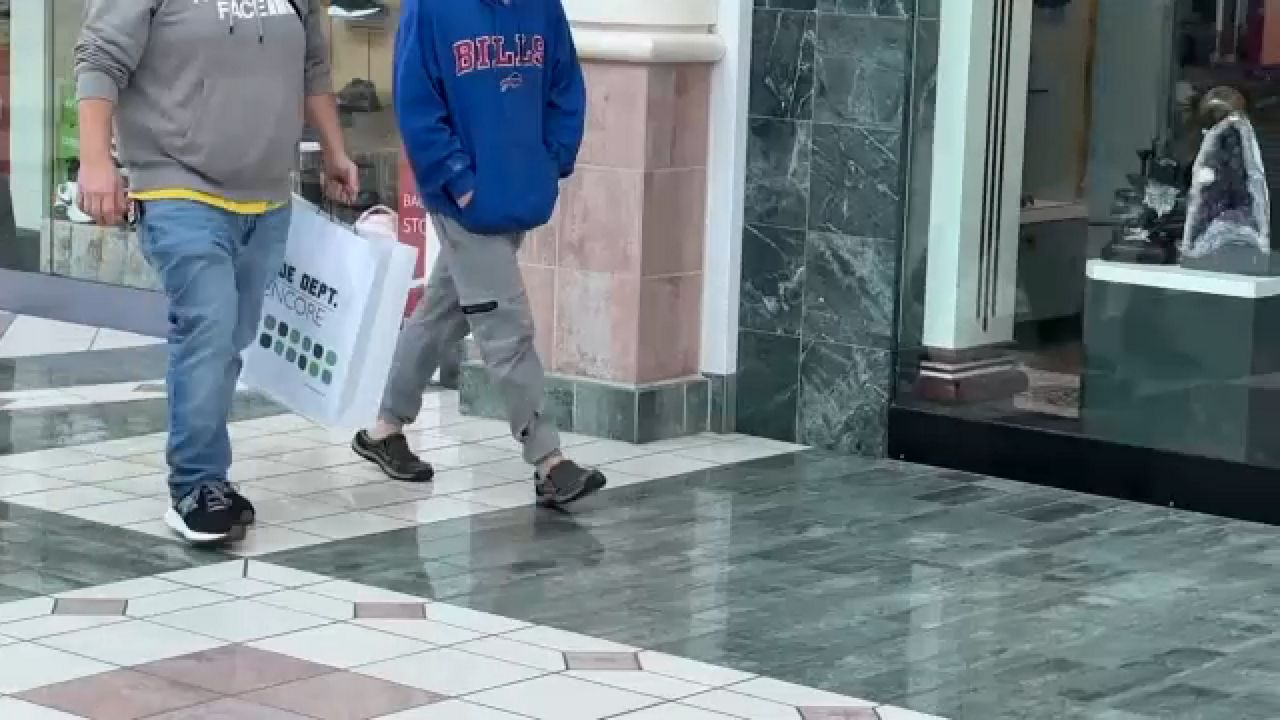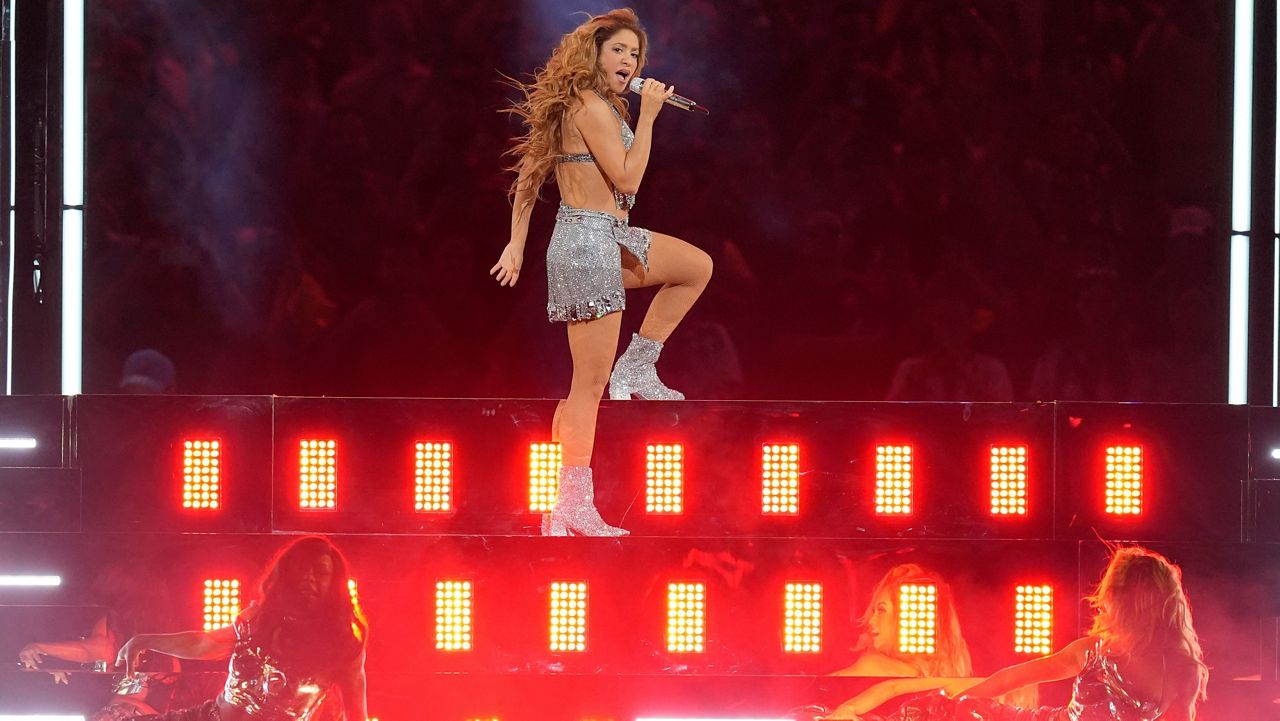World
For Moscow, the war in Ukraine is a rerun of World War II

May 9, Victory Day in Russia celebrating the anniversary of Nazi Germany’s defeat, has always been a moment of intense pride for Russians, recalling their grandparents’ resilience and heroism. Sometimes it feels as if the war ended just the other day.
This year, it seems even more immediate, as the Kremlin’s messaging seeks to conflate World War II with its invasion of Ukraine, blending them into one struggle against “Nazism.”
Why We Wrote This
A story focused on
In 2010, NATO soldiers marched in Red Square alongside Russian troops to celebrate Victory Day, recalling the end of World War II. This year, Moscow is staging a triumphant exhibition of NATO weaponry its forces captured in Ukraine.
Once upon a time, the narrative runs, Napoleon tried and failed to defeat Russia; then the Germans followed suit; and now it is NATO’s turn to be humiliated.
That message is displayed at a major exhibition, currently showing in Moscow’s Victory Park, where some 40 armored vehicles captured from Ukrainian forces are on show. Star exhibits seem to be a U.S. Bradley Fighting Vehicle and an M1 Abrams tank, but hardware made in Britain, Turkey, and Australia, among other countries, also attracts attention from the crowds of visitors.
“The display of these defeated weapons will have a tonic effect on the Russian public,” says Sergei Markov, a former Kremlin adviser. “There is still a great deal of respect among Russians for Western technology, so seeing these smashed weapons up close will temper that.”
The atmosphere around Victory Day on May 9, a holiday celebrating the anniversary of the Soviet Union’s victory over Nazi Germany in 1945, is always charged with martial fervor and a sense of Russia’s enduring resilience. The intensity almost makes it feel as though the war ended only recently.
This year, it seems even more immediate.
With Moscow’s “special military operation,” as its invasion of Ukraine is still officially known, well into its third year, there is a distinct note in official messaging that suggests that World War II never really ended. Victory is a concept that has morphed from the past to future tense.
Why We Wrote This
A story focused on
In 2010, NATO soldiers marched in Red Square alongside Russian troops to celebrate Victory Day, recalling the end of World War II. This year, Moscow is staging a triumphant exhibition of NATO weaponry its forces captured in Ukraine.
Since the war in Ukraine started, the Kremlin has sought to conflate the Soviet Union’s 20th-century struggle against Nazi Germany with today’s campaign to “denazify” Ukraine – a claim most in the West find incomprehensible. But the Kremlin appears to have convinced most Russians that they are not fighting a war for territory and regional control in Ukraine, but facing a recurring effort by the united West to subdue Russia.
In this reading, Ukraine is merely acting as the West’s battering ram.
“From the Russian point of view this is an existential challenge that we face every century,” says Sergei Markov, a former Kremlin adviser. “United Europe turns and attacks Russia.
“In the 19th century, it was Napoleon. In the 20th century, it was Hitler. We see NATO threatening in the same way today. We always won in the past, and we shall win again.”
Built in the West, captured in Ukraine
That idea has been made explicit in a major exhibition of captured Ukrainian military equipment, in Moscow’s central Victory Park, timed to coincide with Victory Day.
On display, in a square adjacent to a major war memorial, are around 40 tanks, fighting vehicles, and armored personnel carriers. Russian soldiers attend each piece, explaining to visitors which country built and donated it to Ukraine – most of them are NATO members – and the circumstances under which it was captured by Russian forces.
Huge crowds have thronged the exhibition since it opened on May 1, in a mood of excitement and intense interest. Visitors, many of them on a family outing, enter past a huge placard that reads “Our Victory is Inevitable!” and one of the first items on show is a World War II-era German self-propelled gun, displayed under a sign reading “History Repeats Itself.”
The stars of the show appear to be a U.S. Bradley Fighting Vehicle, and a badly-battered M1 Abrams tank, whose progress from the battlefield in eastern Ukraine to Moscow was avidly detailed by Russian military video bloggers.
Other vehicles lined up in the open air include tanks, armored personnel carriers, and suchlike made in countries ranging from Britain to Turkey to Australia.
“The display of these defeated weapons will have a tonic effect on the Russian public,” says Mr. Markov. “There is still a great deal of respect among Russians for Western technology, so seeing these smashed weapons up close will temper that.”
Russian Foreign Ministry Spokesperson Maria Zakharova urged foreign diplomats to visit the exhibition to see how “the West destroys peace on the planet.” Russian TV later broadcast a visit by dozens of emissaries from countries of the Global South, escorted through the exhibition by Russian military brass.
NATO and Russian troops once marched in step
The Soviet Union used to celebrate Victory Day with a massive military parade only on key anniversaries, usually giving war veterans pride of place. Boris Yeltsin revived the tradition on the 50th anniversary in 1995, and Vladimir Putin has made it an annual event, involving huge Red Square reviews of troops and weaponry.
Also on display are features such as the “immortal legion,” in which average citizens come out into the streets bearing photos of ancestors who fought in World War II.
Early in the Putin era the Kremlin tried to emphasize the shared victory of Russia and the West over Nazism, and it was common to see Western military attachés in Red Square reviewing stands along with Russian officials on May 9.
In 2010, NATO troops actually took part in the Red Square parade, marching under the gaze of then-Russian President Dmitry Medvedev, German Chancellor Angela Merkel, and Chinese leader Hu Jintao. But following Russia’s annexation of Crimea in 2014, Western leaders boycotted the event, though the Kremlin still tried to find ways to stress the element of common victory over fascism.
The war in Ukraine has banished any hope of reconciliation with the West, perhaps irrevocably. Russian leaders have been surprised by the extent and depth of Western support for Kyiv, and the Kremlin narrative has shifted from a limited “special military operation” in Ukraine toward the notion of a new chapter in Russia’s historic confrontation with the West.
Thursday’s big military parade will be opened by a contingent of Ukraine war veterans, marching through Red Square under the eyes of Mr. Putin and other top leaders, according to the Defense Ministry. Very few World War II veterans are still alive, though they will doubtless also be honored.
“The cult of victory has long ago turned into the cult of war, and the celebration of May 9th in the Putin manner should confirm this symbiosis over and over,” says Andrei Kolesnikov, a Carnegie fellow who lives and works in Russia.
Dmitry Oreshkin, an independent political analyst, notes that wars have contributed much to President Putin’s popularity.
“For an average Western person it might seem a bit strange that people who don’t live all that well would put a stress on victory and high fighting spirit,” he says. “But remember that the events that have consistently strengthened Putin’s rating have all been military operations – Chechnya, Georgia, Crimea, Syria, and now the present war.”










